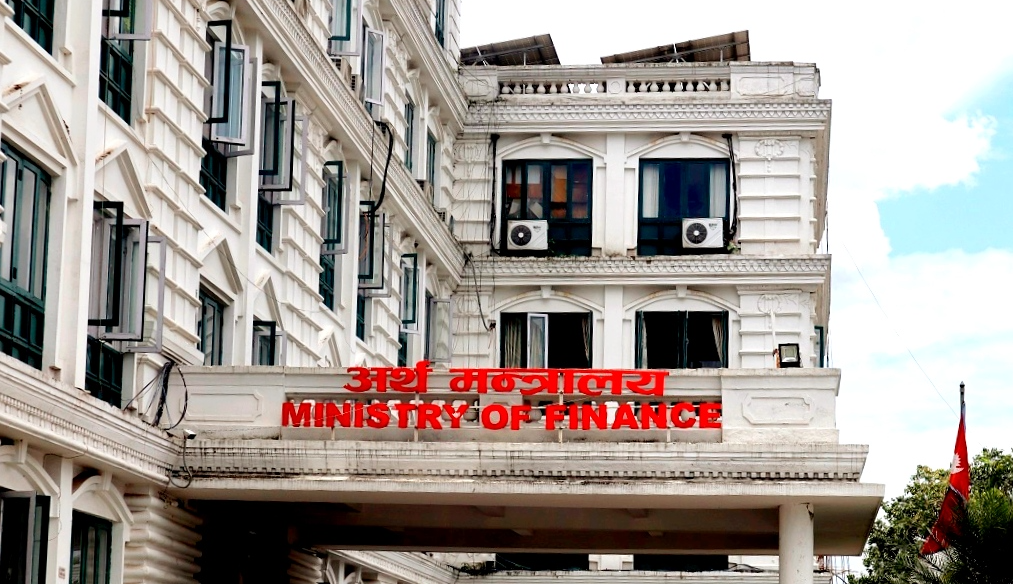Kathmandu: The country’s economy appears to be improving based on recent data. In the fiscal year 2024/25, compared to the previous year, most economic indicators have shown progress.
The government has cleared the outstanding payments due to construction contractors from the previous year. Ministry of Finance said that it paid off liabilities amounting to Rs 30 billion, fulfilling the demands of the construction sector.
The economic growth rate, which was 3.87 percent last year, is projected to reach 4.61 percent in the current fiscal year, as per the National Statistics Office.
The size of the economy has increased by Rs 4 trillion. From a base of Rs 57 trillion last year, it is estimated to grow to NPR 61 trillion this year.
Government revenue has also risen by Rs 108 billion. As of Ashad 26 of the current fiscal year, Rs 1.097 trillion has been collected in revenue, compared to Rs 989 billion during the same period last year.
Capital expenditure by the government has also increased. Rs 208 billion was spent by Ashad 26, which is Rs 36 billion more than Rs 172 billion spent in the same period last year.
The capital market has also shown improvement. On Ashad 25, the NEPSE index reached 2,705 points, compared to just 2,100 points during the same period last year.
According to Nepal Rastra Bank, credit disbursed to the private sector has increased. As of Ashad 25, credit flow to the private sector increased by 8.7 percent, compared to 5.6 percent in the same period last year.
Remittance, Nepal’s strongest source of foreign income, has also seen significant growth. As of Jestha, remittance income reached Rs 1.532 trillion, a 15.5 percent increase from Rs 1.327 trillion in the same period last year.
Exports have increased too. By Jestha, exports of goods and services reached NPR 247 billion, a 77.8 percent rise from Rs 139 billion during the same period last year.
To support economic activity, imports of goods and services have also risen. By Jestha 2082, Nepal imported Rs 1.644 trillion, up from Rs 1.453 trillion the previous year.
There has been an improvement in the balance of payments, which reflects economic and financial transactions between residents and non-residents within a specified period. Data from Nepal Rastra Bank up to the month of Jestha show that net savings from the balance of payments reached Rs 491 billion, up from Rs 425 billion last year.
Foreign exchange reserves have also grown. By Jestha, reserves had reached USD 18.65 billion, compared to USD 14.72 billion last year.
Foreign aid commitments have risen as well, with a total commitment of NPR 219 billion this fiscal year, an increase of NPR 119 billion from the previous year’s commitment of NPR 102 billion up to Chaitra.
Inflation, measured by the Consumer Price Index, stood at 4.17 percent in Jestha, down from 6.83 percent in the same month last year.
By Jestha, the current account was in a surplus of Rs 307 billion. In the previous year, it had a surplus of only Rs 239 billion.
According to the data, commercial banks’ average base interest rate stood at 6.09 percent by Jestha of the current fiscal year, down from 8.17 percent in the same period last year.
Nepal’s capacity to cover imports of goods and services stood at 14 months, compared to just 12 months last year.
Additionally, the National Statistics Office reports that indicators in 18 sectors of the economy are showing positive trends. These include transportation, construction, mining, electricity and gas, trade, banking and insurance, industry, real estate, information technology, agriculture and forestry, administrative services, health services, scientific services, industrial production, education, and accommodation and food services.



Comment Here